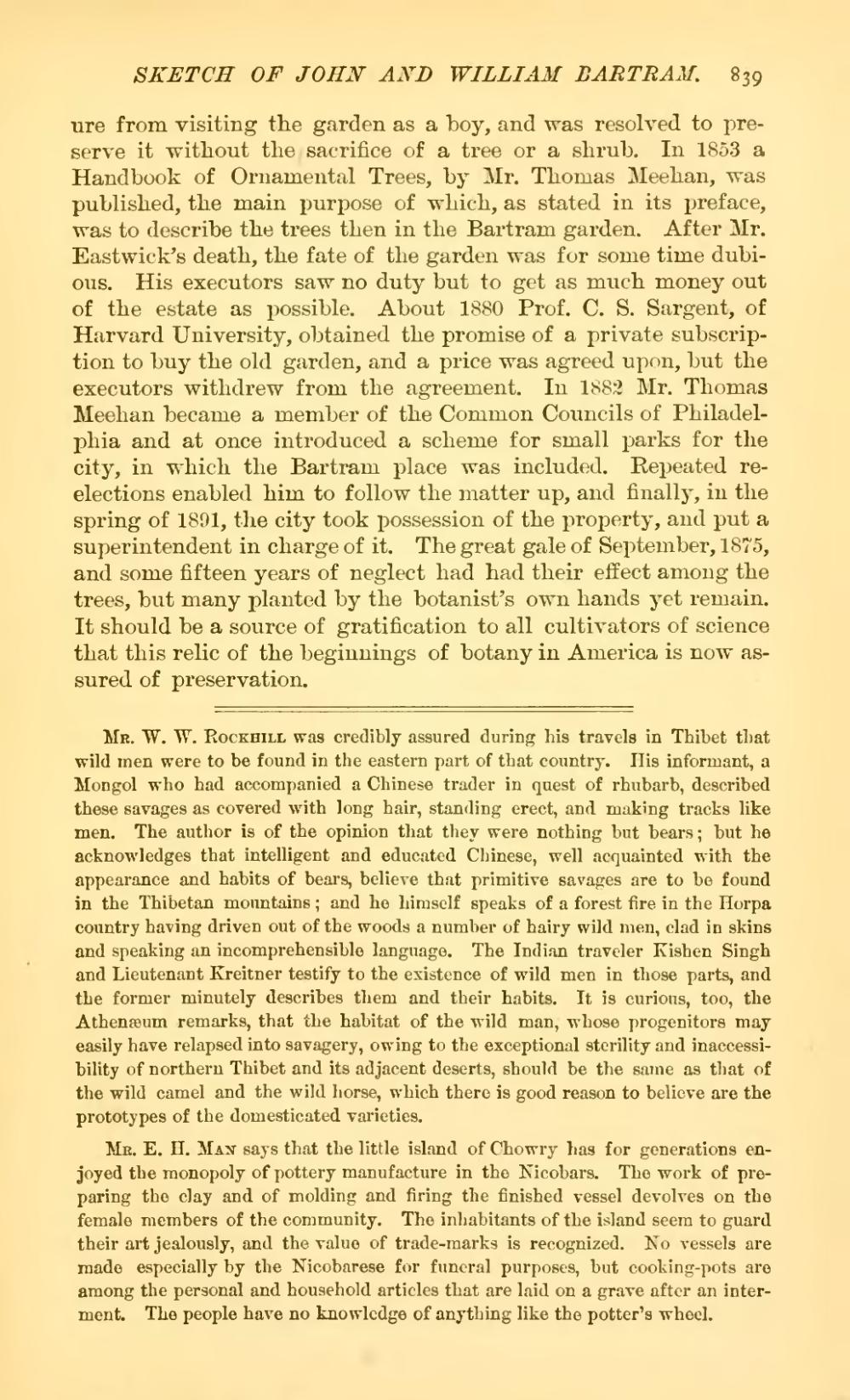ure from visiting the garden as a boy, and was resolved to preserve it without the sacrifice of a tree or a shrub. In 1853 a Handbook of Ornamental Trees, by Mr. Thomas Meehan, was published, the main purpose of which, as stated in its preface, was to describe the trees then in the Bartram garden. After Mr. Eastwick's death, the fate of the garden was for some time dubious. His executors saw no duty but to get as much money out of the estate as possible. About 1880 Prof. C. S. Sargent, of Harvard University, obtained the promise of a private subscription to buy the old garden, and a price was agreed upon, but the executors withdrew from the agreement. In 1882 Mr. Thomas Meehan became a member of the Common Councils of Philadelphia and at once introduced a scheme for small parks for the city, in which the Bartram place was included. Repeated reelections enabled him to follow the matter up, and finally, in the spring of 1891, the city took possession of the property, and put a superintendent in charge of it. The great gale of September, 1875, and some fifteen years of neglect had had their effect among the trees, but many planted by the botanist's own hands yet remain. It should be a source of gratification to all cultivators of science that this relic of the beginnings of botany in America is now assured of preservation.
Mr. W. W. Rockhill was credibly assured during his travels in Thibet that wild men were to be found in the eastern part of that country. His informant, a Mongol who had accompanied a Chinese trader in quest of rhubarb, described these savages as covered with long hair, standing erect, and making tracks like men. The author is of the opinion that they were nothing but bears; but he acknowledges that intelligent and educated Chinese, well acquainted with the appearance and habits of bears, believe that primitive savages are to be found in the Thibetan mountains; and he himself speaks of a forest fire in the Horpa country having driven out of the woods a number of hairy wild men, clad in skins and speaking an incomprehensible language. The Indian traveler Kishen Singh and Lieutenant Kreitner testify to the existence of wild men in those parts, and the former minutely describes them and their habits. It is curious, too, the Athenæum remarks, that the habitat of the wild man, whose progenitors may easily have relapsed into savagery, owing to the exceptional sterility and inaccessibility of northern Thibet and its adjacent deserts, should be the same as that of the wild camel and the wild horse, which there is good reason to believe are the prototypes of the domesticated varieties.
Mr. E. H. Man says that the little island of Chowry has for generations enjoyed the monopoly of pottery manufacture in the Nicobars. The work of preparing the clay and of molding and firing the finished vessel devolves on the female members of the community. The inhabitants of the island seem to guard their art jealously, and the value of trade-marks is recognized. No vessels are made especially by the Nicobarese for funeral purposes, but cooking-pots are among the personal and household articles that are laid on a grave after an interment. The people have no knowledge of anything like the potter's wheel.
